Tag: electronic resources
New Project Release: Marion and Herb Sandler Oral History Project
New Project Release: Marion and Herb Sandler Oral History Project
Herb Sandler and Marion Osher Sandler formed one of the most remarkable partnerships in the histories of American business and philanthropy—and, if their friends and associates would have a say in things, in the living memory of marriage writ large. This oral history project documents the lives of Herb and Marion Sandler through their shared pursuits in raising a family, serving as co-CEOs for the savings and loan Golden West Financial, and establishing a remarkably influential philanthropy in the Sandler Foundation. This project consists of eighteen unique oral history interviews, at the center of which is a 24-hour life history interview with Herb Sandler.
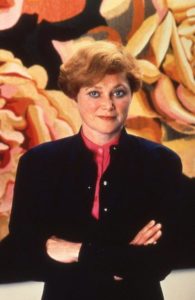
Marion Osher Sandler was born October 17, 1930, in Biddeford, Maine, to Samuel and Leah Osher. She was the youngest of five children; all of her siblings were brothers and all went on to distinguished careers in medicine and business. She attended Wellesley as an undergraduate where she was elected into Phi Beta Kappa. Her first postgraduate job was as an assistant buyer with Bloomingdale’s in Manhattan, but she left in pursuit of more lofty goals. She took a job on Wall Street, in the process becoming only the second woman on Wall Street to hold a non-clerical position. She started with Dominick & Dominick in its executive training program and then moved to Oppenheimer and Company where she worked as a highly respected analyst. While building an impressive career on Wall Street, she earned her MBA at New York University.
Herb Sandler was born on November 16, 1931 in New York City. He was the second of two children and remained very close to his brother, Leonard, throughout his life. He grew up in subsidized housing in Manhattan’s Lower East Side neighborhood of Two Bridges. Both his father and brother were attorneys (and both were judges too), so after graduating from City College, he went for his law degree at Columbia. He practiced law both in private practice and for the Waterfront Commission of New York Harbor where he worked on organized crime cases. While still living with his parents at Knickerbocker Village, he engaged in community development work with the local settlement house network, Two Bridges Neighborhood Council. At Two Bridges he was exposed to the work of Episcopal Bishop Bill Wendt, who inspired his burgeoning commitment to social justice.
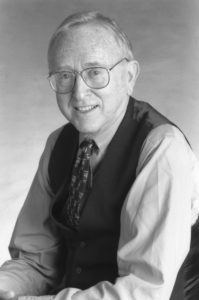
Given their long and successful careers in business, philanthropy, and marriage, Herb and Marion’s story of how they met has taken on somewhat mythic proportions. Many people interviewed for this project tell the story. Even if the facts don’t all align in these stories, one central feature is shared by all: Marion was a force of nature, self-confident, smart, and, in Herb’s words, “sweet, without pretentions.” Herb, however, always thought of himself as unremarkable, just one of the guys. So when he first met Marion, he wasn’t prepared for this special woman to be actually interested in dating him. The courtship happened reasonably quickly despite some personal issues that needed to be addressed (which Herb discusses in his interview) and introducing one another to their respective families (but, as Herb notes, not to seek approval!).
Within a few years of marriage, Marion was bumping up against the glass ceiling on Wall Street, recognizing that she would not be making partner status any time soon. While working as an analyst, however, she learned that great opportunity for profit existed in the savings and loan sector, which was filled with bloat and inefficiency as well as lack of financial sophistication and incompetence among the executives. They decided to find an investment opportunity in California and, with the help of Marion’s brothers (especially Barney Osher), purchased a tiny two-branch thrift in Oakland, California: Golden West Savings and Loan.
Golden West—which later operated under the retail brand of World Savings—grew by leaps and bounds, in part through acquisition of many regional thrifts and in part through astute research leading to organic expansion into new geographic areas. The remarkable history of Golden West is revealed in great detail in many of the interviews in this project, but most particularly in the interviews with Herb Sandler, Steve Daetz, Russ Kettell, and Mike Roster, all of whom worked at the institution. The savings and loan was marked by key attributes during the forty-three years in which it was run by the Sandlers. Perhaps most important among these is the fact that over that period of time the company was profitable all but two years. This is even more remarkable when considering just how volatile banking was in that era, for there were liquidity crises, deregulation schemes, skyrocketing interest rates, financial recessions, housing recessions, and the savings and loan crisis of the 1980s, in which the entire sector was nearly obliterated through risky or foolish decisions made by Congress, regulators, and managements. Through all of this, however, Golden West delivered consistent returns to their investors. Indeed, the average annual growth in earnings per share over 40 years was 19 percent, a figure that made Golden West second only to Warren Buffett’s Berkshire Hathaway, and the second best record in American corporate history.
Golden West is also remembered for making loans to communities that had been subject to racially and economically restrictive redlining practices. Thus, the Sandlers played a role in opening up the dream of home ownership to more Americans. In the offices too, Herb and Marion made a point of opening positions to women, such as branch manager and loan officer, previously held only by men. And, by the mid-1990s, Golden West began appointing more women and people of color to its board of directors, which already was presided over by Marion Sandler, one of the longest-serving female CEOs of a major company in American history. The Sandlers sold Golden West to Wachovia in 2006. The interviews tell the story of the sale, but at least one major reason for the decision was the fact that the Sandlers were spending a greater percentage of their time in philanthropic work.
One of the first real forays by the Sandlers into philanthropic work came in the wake of the passing of Herb’s brother Leonard in 1988. Herb recalls his brother with great respect and fondness and the historical record shows him to be a just and principled attorney and jurist. Leonard was dedicated to human rights, so after his passing, the Sandlers created a fellowship in his honor at Human Rights Watch. After this, the Sandlers giving grew rapidly in their areas of greatest interest: human rights, civil rights, and medical research. They stepped up to become major donors to Human Rights Watch and, after the arrival of Anthony Romero in 2001, to the American Civil Liberties Union.
The Sandlers’ sponsorship of medical research demonstrates their unique, creative, entrepreneurial, and sometimes controversial approach to philanthropic work. With the American Asthma Foundation, which they founded, the goal was to disrupt existing research patterns and to interest scientists beyond the narrow confines of pulmonology to investigate the disease and to produce new basic research about it. Check out the interview with Bill Seaman for more on this initiative. The Program for Breakthrough Biomedical Research at the University of California, San Francisco likewise seeks out highly-qualified researchers who are willing to engage in high-risk research projects. The interview with program director Keith Yamamoto highlights the impacts and the future promise of the research supported by the Sandlers. The Sandler Fellows program at UCSF selects recent graduate school graduates of unusual promise and provides them with a great deal of independence to pursue their own research agenda, rather than serve as assistants in established labs. Joe DeRisi was one of the first Sandler Fellows and, in his interview, he describes the remarkable work he has accomplished while at UCSF as a fellow and, now, as faculty member who heads his own esteemed lab.
The list of projects, programs, and agencies either supported or started by the Sandlers runs too long to list here, but at least two are worth mentioning for these endeavors have produced impacts wide and far: the Center for American Progress and ProPublica. The Center for American Progress had its origins in Herb Sandler’s recognition that there was a need for a liberal policy think tank that could compete in the marketplace of ideas with groups such as the conservative Heritage Foundation and the American Enterprise Institute. The Sandlers researched existing groups and met with many well-connected and highly capable individuals until they forged a partnership with John Podesta, who had served as chief of staff under President Bill Clinton. The Center for American Progress has since grown by leaps and bounds and is now recognized for being just what it set out to be.
The same is also true with ProPublica. The Sandlers had noticed the decline of traditional print journalism in the wake of the internet and lamented what this meant for the state of investigative journalism, which typically requires a meaningful investment of time and money. After spending much time doing due diligence—another Sandler hallmark—and meeting with key players, including Paul Steiger of the Wall Street Journal, they took the leap and established a not-for-profit investigative journalism outfit, which they named ProPublica. ProPublica not only has won several Pulitzer Prizes, it has played a critical role in supporting our democratic institutions by holding leaders accountable to the public. Moreover, the Sandler Foundation is now a minority sponsor of the work of ProPublica, meaning that others have recognized the value of this organization and stepped forward to ensure its continued success. Herb Sandler’s interview as well as several other interviews describe many of the other initiatives created and/or supported by the foundation, including: the Center for Responsible Lending, Oceana, Center on Budget and Policy Priorities, Learning Policy Institute, and more.
Herb and Marion Sandler also played key roles in the formation and funding of two important research centers here on the UC Berkeley campus which have a global reach: the Berkeley Center for Equitable Growth (CEG) and the Human Rights Center. The CEG is directed by economist Emmanual Saez and has supported the influential work of Thomas Piketty which looks at methods for reducing wealth and income disparities around the globe. The Human Rights Center has for the past 25 years investigated and shed light upon human rights abuses around the globe.
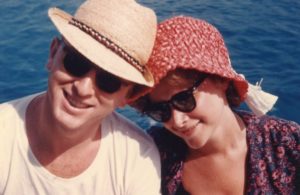
A few interviewees shared the idea that when it comes to Herb and Marion Sandler there are actually three people involved: Marion Sandler, Herb Sandler, and “Herb and Marion.” The later creation is a kind of mind-meld between the two which was capable of expressing opinions, making decisions, and forging a united front in the ambitious projects that they accomplished. I think this makes great sense because I find it difficult to fathom that two individuals alone could do what they did. Because Marion Sandler passed away in 2012, I was not able to interview her, but I am confident in my belief that a very large part of her survives in Herb’s love of “Herb and Marion,” which he summons when it is time to make important decisions. And let us not forget that in the midst of all of this work they raised two accomplished children, each of whom make important contributions to the foundation and beyond. Moreover, the Sandlers have developed many meaningful friendships (see the interviews with Tom Laqueur and Ronnie Caplane), some of which have spanned the decades.
The eighteen interviews of the Herb and Marion Sandler oral history project, then, are several projects in one. It is a personal, life history of a remarkable woman and her mate and life partner; it is a substantive history of banking and of the fate of the savings and loan institution in the United States; and it is an examination of the current world of high-stakes philanthropy in our country at a time when the desire to do good has never been more needed and the importance of doing that job skillfully never more necessary.
Martin Meeker, Charles B. Faulhaber Director, Oral History Center, UC Berkeley
List of Interviews of the Marion and Herbert Sandler Oral History Project
Ronnie Caplane, “Ronnie Caplane: On Friendship with Marion and Herb.”
Joseph DeRisi, “Joe DeRisi: From Sandler Fellow to UCSF Professor of Biochemistry.”
Stephen Hauser, “Stephen Hauser: Establishing the Sandler Neurosciences Center at UCSF.”
Russell Kettell, “Russ Kettell: A Career with Golden West Financial.”
Thomas Laqueur, “Tom Laqueur: On the Meaning of Friendship.”
Bernard Osher, “Barney Osher: On Marion Osher Sandler.”
Michael Roster, “Michael Roster: Attorney and Golden West Financial General Counsel.”
Kenneth Roth, “Kenneth Roth: Human Rights Watch and Achieving Global Impact.”
Herbert Sandler, “Herbert Sandler: A Life with Marion Osher Sandler in Business and Philanthropy.”
James Sandler, “Jim Sandler: Commitment to the Environment in the Sandler Foundation.”
Susan Sandler, “Susan Sandler: The Sandler Family and Philanthropy.”
William Seaman, “Bill Seaman: The American Asthma Foundation.”
Paul Steiger, “Paul Steiger: Business Reporting and the Creation of ProPublica.”
Richard Tofel, “Richard Tofel: The Creation and Expansion of ProPublica.”
Current Trial: Struggle For Freedom: Southern Africa
A trial of Struggle For Freedom: Southern Africa is available to the UC Berkeley community for one month beginning today, January 18th 2018. The URL to access the trial is http://www.aluka.org/struggles
The liberation of Southern Africa and the dismantling of the Apartheid regime was one of the major political developments of the 20th century, with far-reaching consequences for people throughout Africa and around the globe. Struggles for Freedom: Southern Africa focuses on the complex and varied liberation struggles in the region, with an emphasis on Botswana, Mozambique, Namibia, South Africa, and Zimbabwe.
Struggles for Freedom: Southern Africa brings together materials from various archives and libraries throughout the world documenting colonial rule, dispersion of exiles, international intervention, and the worldwide networks that supported successive generations of resistance within the region.
The resource consists of 76 different collections of more than 20,000 objects and 190,000 pages of documents and images, including periodicals, nationalist publications, records of colonial government commissions, local newspaper reports, personal papers, correspondence, UN documents, out-of-print and other particularly relevant books, pamphlets, speeches, and interviews with those who participated in the struggles.
The materials in Struggles for Freedom: South Africa were selected with the guidance of national advisory committees consisting of leading scholars, archivists, and public intellectuals in six African countries along with scholars from outside the region.
Please contact Adam Clemons at aclemons@berkeley.edu with your feedback about this resource.
In Memory of Ruth Bancroft 9/2/1908 – 11/26/2017

UC Berkeley alumna Ruth Petersson Bancroft, founder of The Ruth Bancroft Garden in Walnut Creek and well-known expert in dry gardening, passed away at the age of 109 on Nov. 26. Her oral history, The Ruth Bancroft Garden in Walnut Creek, California: Creation in 1971 and Conservation, conducted in 1991 and 1992, is described by interviewer Suzanne B. Riess as “…the amazing chronicle of the growth of a passionate gardener, from her childhood recollections of spring wildflowers on the hills of an earlier, bucolic Berkeley, to her current triumphs, and the tribulations of stewardship of a garden more or less in the public trust.”
The daughter of first-generation Swedish immigrants, Ruth Petersson was born in Massachusetts, but moved to Berkeley, California when her father landed a professorship at UC Berkeley. Of her childhood, she said, “I spent a lot of time wandering around and also over into Wildcat Canyon, just looking at the wildflowers and I think that’s what started me in the interest of wildflowers…” Although Ruth originally studied architecture as one of the only women in the program at UC Berkeley, the Great Depression hit and so for the sake of job security, she switched her career to education. It was during her time as a teacher of home economics in Merced that she met Philip Bancroft, Jr., the grandson of Hubert Howe Bancroft, whose 60,000-volume book collection began the Bancroft Library. After they married, the couple moved onto the Bancroft Farm in the East Bay. The Bancroft family sold much of their land to the city of Walnut Creek as it expanded over the years. Later, in 1971, Philip Bancroft, Jr. gave the last 3-acre plot of walnut orchards to his wife in order to house her extensive collection of succulents.
Though The Ruth Bancroft Garden now boasts a beautiful display of water-conserving plants, the garden was not without its hardships at the beginning. Just a few months after Bancroft began her garden, a severe freeze in December killed nearly all that she had planted. Still, she persevered. “Well, I started again the next year… I figured it doesn’t happen that often, and you can’t just not replant those same things, because they might have another twenty years before they’d be killed again. So I’m just replanting. Have to start over again.” To this, Riess queried, “You didn’t think in some way you had been given a message?” Bancroft laughed and replied, “No.”
A long-time friend of Bancroft and former manager at the UC Berkeley Botanical Garden, Wayne Roderick said, “I would classify Ruth as a genuine dirt gardener. She’s out there doing things with her bare hands. She would be out in the garden by seven at the latest, and for the first hour she was weeding the path of the little spotted spurge, hand-weeding those paths until her knees would get so sore from the rocks, the gravel. That’s what I mean by a genuine dirt gardener.” In addition to Bancroft’s hands-on style of working, she also kept meticulous records as she created her garden. An invaluable addition to her oral history is the transcription of the entirety of her handwritten notes on the garden’s first year, cataloguing every trial and triumph. Riess urges in her introduction to the oral history, “Any gardener will do well to read that year of Ruth’s journal, to see the value of a journal, as well as the work involved in realizing a dream, and the necessity of being willing to weed!”
Over the years, Bancroft also had many helpers that contributed to the development of her impressive creation, such as Lester Hawkins, who created the original design of the garden, and her husband Philip. Roderick recalls, “Phil Bancroft just adored Ruth, and he wanted her to have anything she wanted. He did everything he could to help her. I don’t think Phil thought about the garden continuing, but he certainly was there to make sure she got what she wanted for the place. He was a farmer-type, but he enjoyed seeing the garden, and he was willing to get in and help.” Later, her garden would inspire fellow gardener Francis Cabot to create the Garden Conservancy, of which the Ruth Bancroft Garden became the first of many private gardens to be preserved for the public.
Still, through all of the international recognition and acclaim she received, Bancroft maintained a simple and genuine love for gardening: “You never know just what’s going to bloom when, during the summer. And a lot of the bloom just lasts a day, or possibly two days. It’s interesting to see what there is, and catch it before it’s gone.” When asked whether she had had a mission for the garden, she replied, “I just started it for the fun of it, and the enjoyment of it. I had no idea that people would be looking at it, no idea at all.“
Maggie Deng
Oral History Center Student Assistant
Announcing the Release of the California / San Francisco Fire Departments Oral History Project
The world of firefighting is much more than masked people in uniforms running into burning buildings and rescuing scared cats from trees. While the bravery of firefighters can’t be overestimated, they also work in a complex system that requires constant training and education, a cohesive partnership with local government, extensive procedures and protocols, managerial oversight, effective communication within departments and to the public, acute familiarity with the local and regional environment, and a whole lot of administrative work. The San Francisco Fire Department (SFFD) is a shining example of how people make a civil service operation run and keep people safe. All of these elements, as well as the historic and cultural aspects of the department, are why we chose it as our focus for our California Fire Departments Oral History Project.
The project was originally conceived by Sarah Wheelock, an independent researcher. She wanted to explore several major thematic areas of firefighting in California and she worked with the Oral History Center to do just that. With great sadness we learned that Sarah passed away in 2014 and thus she was unable to see the project through to completion. Taking over the project in 2016, I wanted to honor her original plan and cover the themes that she had outlined. So, I decided to embark on interviews within one department – the SFFD – to document the ways in which they have handled urban fire, climate change, diversity, technological change, and changing demographics.
The SFFD was founded in 1849 and was run by volunteers. It became a paid department, officially integrated into city government, in 1866. The 150th anniversary of the paid department was in 2016, when I was conducting interviews. Given my budget for the project, I was able to interview six people who worked with the SFFD in different capacities. I wanted to include multiple perspectives to understand the organizational, cultural, geographic, economic, and political systems of one of the oldest departments in the country.
The individuals who I interviewed were able to illustrate many of the themes that I wanted to document, and much more. Among the six people I interviewed were Chief Robert Demmons (the first and only African American chief of the SFFD who instrumental in integrating more more women and people of color into the SFFD), Bill Koenig (longtime firefighter and co-founder of Guardians of the City and the SFFD Museum), Jim Lee (also a longtime firefighter and co-founder of Guardians of the City and the SFFD Museum), Steve Nakajo (member of the SFFD Fire Commission), Lt. Anne Young (one of the first females hired), and Jonathan Baxter (longtime paramedic and current Public Information Officer).
These interviews work in concert to illustrate day-to-day operations in the stations, administrative duties, how the city of San Francisco and the department work together, the relationship between paramedics and the department, training, equipment, fire science school, the role of unions, the challenges and triumphs of integrating the departments, the public perception of the department, the role of innovation and changing technology, cultural changes in the department, challenges in fire safety particular to the geography of San Francisco, and the hopes for the future of the SFFD.
It is with great excitement that we present the California / San Francisco Fire Departments Oral History Project. I want to give a special thanks to all of the narrators for sharing their stories with me and helping me to document one of the most historically significant fire departments in our country.
This project is dedicated to the memory of Sarah Wheelock. Her California Firefighter oral histories from the 2000s will be released in early 2018.
Reaxys 2.0 Migration
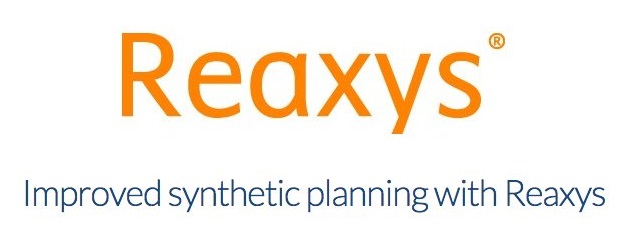
Reaxys is a web-based tool for the retrieval of chemistry information and data from published literature, including journals and patents.Chemists at Berkeley are active users of Reaxys, doing 1000’s of searches/month!
Elsevier has rolled out a new version of Reaxys (Reaxys 2.0) that has a number of enhanced features, including:
- An increasingly simple user interface. The opening page has spaces to (a) type in the search query in a search bar or (b) type in the name of the structure or draw the structure.
- Search functions using the querylets to increase the specificity of the search and reduces the time that the user has to filter the results post search.
- Search functions that contain auto suggest. Similarly it also searches for singular/plural and synonyms
- Using Boolean operators (obviously one of Elsevier’s strengths)
- Listing hits in the initial screen (post search). No secondary search needed.
- A big increase in the number of searchable Asian patents
The migration is Reaxys 2.0 is ongoing, but migration should be completed by November 30, 2017. Soon UCB users will be directed to the new interface, but will continue to have the option to use the old interface for the foreseeable future.
BiGLI Online
The Library has begun a subscription to BiGLI Online which is the digital version of the fundamental print bibliography and discovery tool for the field of Italian language and literature – Bibliografia Generale della Lingua e della Letteratura Italiana. It includes texts, critical and historical surveys, philogical and linguistic notes, essays, monographs, bibliographic reviews, and more from 1981 to present. With the assistance of an international team of experts and co-published by the Centro Pio Rajna and Salerno Editrice in Rome, the BiGLI is regarded as “a census of the diffusion and dissemination of Italian culture in the world.”
Beckett Digital Manuscript Project
Romance Language Collections Newsletter no.1 (Fall 2016)
What’s new in the Library for Fall 2016?
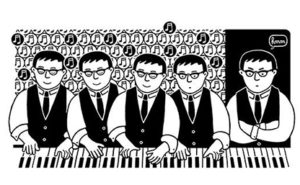
The graphic novel Le piano oriental by Zeina Abirached will be on display in the Doe Library exhibition Beyond Tintin and Superman: The Diversity of Global Comics opening September 19.
Welcome back everyone! Here’s a brief sum-up of new services and library resources with a focus on the Romance languages and southern European studies in particular.
New Blog – Over the summer the Library migrated all of its blogs to WordPress. From this point forward, please look here for all Romance Language Collections news. If you choose not to subscribe to the blog, don’t worry. I usually forward the most important posts to your respective department listservs.
Electronic Resources
OpenEdition Books – With a combination of generous discretionary and endowment funds, the Library was able to acquire the complete ebook catalogue of this open access book initiative based at Université d’Aix-Marseille. We now have enhanced and permanent access to more than 2700 open access books (most in French but also in Italian, Spanish and Portuguese) that can be read in four different formats (epub, pdf, html, or reader) from prestigious academic presses like CNRS Éditions, Presses Universitaires de Rennes, and l’École française de Rome. We have also have become partners in an acquisitions policy that both supports sustainable development of OA and that respects the needs of teaching, research and learning communities.
OpenEdition Journals – Also known as Revues.org, the Library has purchased permanent access to the 140 journals available through OpenEdition’s freemium model, eliminating moving walls and gaining similar formats enhancements as the ebooks. Representative titles include Arzanà: Cahiers de littérature médiévale italienne, Cahiers d’études romanes, Flaubert: Revue critique et génétique, and L’Atelier du Centre de recherches historiques.
Ebooks on Casalini’s Torrossa platform – Besides the Italian ebooks the Library receives through its subscription to Editoria Italiana Online, we added 200 additional titles last spring. Casalini Libri also unveiled a new reader in July which greatly improves the readability (especially on smartphones and tablets) of the near 2500 titles in Berkeley’s collection of Italian ebooks.
Kanopy and the Media Resources Center – New films and documentaries in the Romance Languages from not only Europe but also Africa and Latin America are regularly added to this online streaming service. Beginning this semester, check-out periods for DVDs and VHS tapes from the MRC will be extended to 7 days for faculty, lecturers and graduate student instructors!
Continue reading “Romance Language Collections Newsletter no.1 (Fall 2016)”
UCB Library Partners with OpenEdition

OpenEdition is an interdisciplinary humanities and social sciences portal with four complementary platforms: OpenEdition Books (ebooks), Revues.org (scholarly journals), Calenda (academic announcements), and Hypotheses (research blogs). It is a non-profit public initiative that promotes open access (OA) publishing, with the support of French research institutions. Most of the content is in French but also in other European languages, including English.
The institutional subscription to OpenEdition Fremium allows the UC Berkeley community to participate in an acquisitions policy that both supports sustainable development of OA and that respects the needs of teaching, research and learning communities: no DRM or download quotas are applied. As such, thousands of ebooks and journals are discoverable through the portal or through the Library’s catalogs and bibliographic search tools permitting researchers to benefit from a range of digital formats, some optimized specifically for e-readers, tablets, and smart phones (ePub, PDF, etc.)
OpenEdition is an initiative of the Centre for Open Electronic Publishing (Cléo), a unit that brings together the Centre National de la Recherche Scientifique (CNRS), the Université d’Aix-Marseille, the École des Hautes Études en Sciences Sociales (EHESS) and the Université d’Avignon et des Pays de Vaucluse.
Le Grand Corpus des dictionnaires
Produced by the Classiques Garnier Numérique team in Paris, the Grand Corpus des dictionnaires brings together in one searchable database the 24 most important dictionaries on the French language from the 9th to the 20th century. Most works are presented in a digitized format identical to the original as well as a textual facsimile, providing advanced searches and other sophisticated functionality. Includes Godefroy’s Dictionnaire de l’ancienne langue française, Robert Estienne’s Dictionaire François latin (1549), Furetière’s Dictionnaire de l’ancienne langue française (1690), eight editions of the Le Dictionaire de l’Académie françoise, and many others.
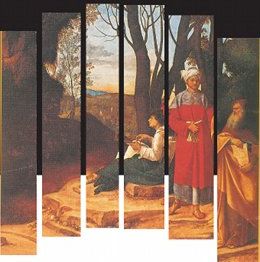
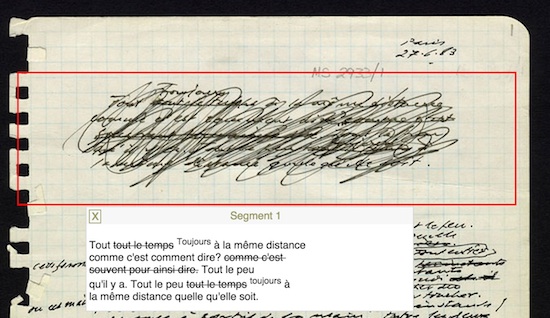
![Les membres de l'Académie française venant offrir au Roi le Dictionnaire de l'Académie : [estampe]](https://s3.amazonaws.com/libapps/accounts/5279/images/roi-dictionnaire.jpg)